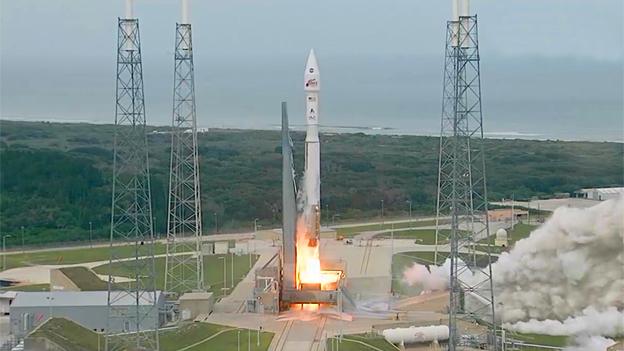Mars Maven mission arrives in orbit
- Published
- comments
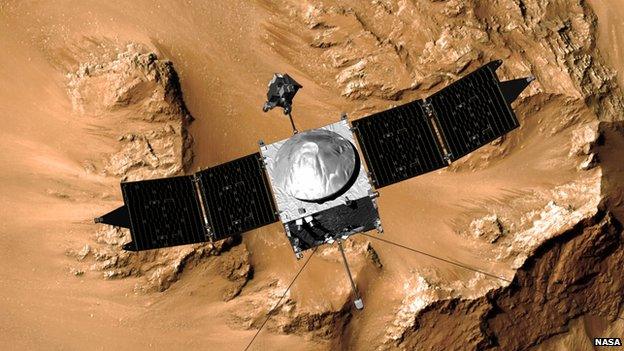
Beyond its science mission, Maven will offer long-term communications support to surface rovers
The US space agency's (Nasa) latest Mars satellite has arrived successfully in orbit above the planet.
Hurtling through space for the past 10 months, the Maven craft slammed on the brakes by firing its thrusters.
The 33-minute burn removed sufficient speed to allow the satellite to be captured by Mars' gravity.
Maven has been sent to study the Red Planet's high atmosphere, to try to understand the processes that have robbed the world of most of its air.
Today, the air pressure is so low that free water at the surface would instantly boil away.
Maven's data will enable scientists to build better models of current and past climate conditions on Mars.
"Previous spacecraft have made measurements and we've learned a lot about the upper-atmosphere, but we haven't been able to put the whole end-to-end picture together," said principal investigator Bruce Jakosky.
"I'm hoping Maven will be a mission of discovery, that almost everything we observe will lead us to fundamental new insights about the Mars environment today and how it has evolved over time," the University of Colorado, Boulder, researcher added.
Busy time
The American probe's arrival will be followed 48 hours later by India's first satellite to the Red Planet.
The Mars Orbiter Mission, informally known as Mangalyaan, has slightly different objectives.
But one important atmospheric study it will try to make is an observation of methane - a potential indicator of biological activity on the planet.
"Nasa is really quite interested in cooperating and correlating data-sets," said Dr Jim Green, Nasa's director of planetary science.
"As both spacecraft get into orbit and the scientists understand their data, those opportunities will open up."

Mars orbiters have recorded ample evidence that water once flowed on the planet
Monday's big manoeuvre on Maven's engines placed the satellite in a high, elliptical, 35-hour orbit around the planet.
Confirmation of capture was received on Earth shortly before 0230 GMT (2230 EDT Sunday; 0330 BST).
In the coming weeks, engineers will then work to bring Maven into a regular 4.5-hour, operational orbit that takes the probe as close as 150km to Mars but also sends it out to 6,200km.
These first few weeks will also be used to commission and test the instrument packages on board.
The present-day atmosphere of Mars, composed mostly of carbon dioxide, is extremely thin, with atmospheric pressure at the surface just 0.6% of the Earth's surface pressure.
The Martian landscape, though, retains channels that were evidently cut by abundant, flowing water - proof that the planet had a much denser atmosphere in the past.
'Deep dip'
Some of the air would certainly have reacted with, and been incorporated into, minerals at the surface.
But the most likely explanation for its loss is that the solar wind - the great outflow of energetic particles from the Sun - has simply eroded it through time.
This has been possible because, unlike Earth, the Red Planet lacks a protective global magnetic field, which is capable of deflecting the abrasive assault from our star.
Some of Maven's instruments will concentrate on the Sun's influence, looking at how much energy it puts into the planet and its atmosphere.
Others instruments will investigate the composition and behaviour of the atmosphere itself, and this will involve some "deep dip" manoeuvres that take Maven closer to Mars' surface so it can sample air molecules directly.
The intention is to measure the rates at which these different molecules are being lost today, distinguishing between the various processes responsible.
Scientists will use this information to get some insights into the history of the Martian climate - from the time billions of years ago when it was warmer and wetter, and potentially habitable to life, to the present environment which is cold and desiccated.
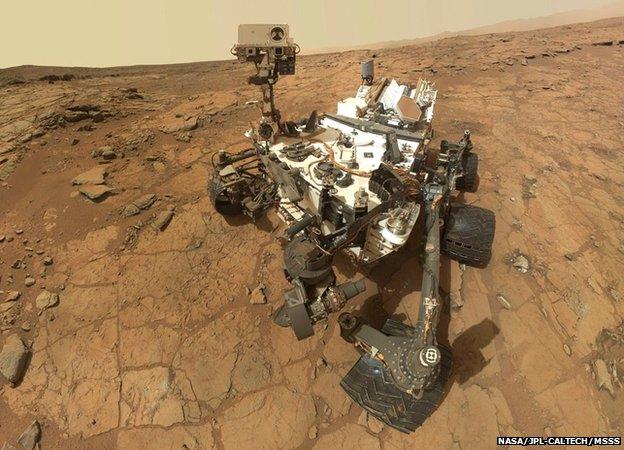
Curiosity has been studying the atmosphere at ground level
Important inputs will come from Nasa's Curiosity rover, which is studying the bottom of the atmosphere.
Its onboard lab equipment regularly analyses Martian air.
The robot has already used the concentration of argon to show an enrichment of the heavier form of this element has occurred through geological history.
It is evidence that lighter argon atoms have been lost preferentially from the top of the atmosphere.
Comet opportunity
An early demonstration of Maven's capabilities will come in October when Comet Siding Spring makes a close pass of Mars.
This is likely to dump a lot of dust on the planet.
"If significant amounts of dust hit the upper-atmosphere, we'll see increases in the temperature… and it will expand," said Prof Jakosky.
"In addition, the water from the comet that hits the upper-atmosphere will begin to populate it with an extra set of molecules.
"We'll look at this perturbation, with the addition of energy and matter, and then see how long it takes to decay away.
"That will tell us about the physical processes that are operating in the upper-atmosphere today."
Jonathan.Amos-INTERNET@bbc.co.uk and follow me on Twitter: @BBCAmos, external
- Published22 September 2014
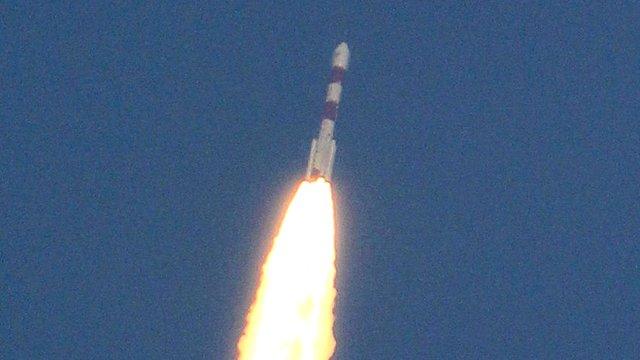
- Published14 November 2013
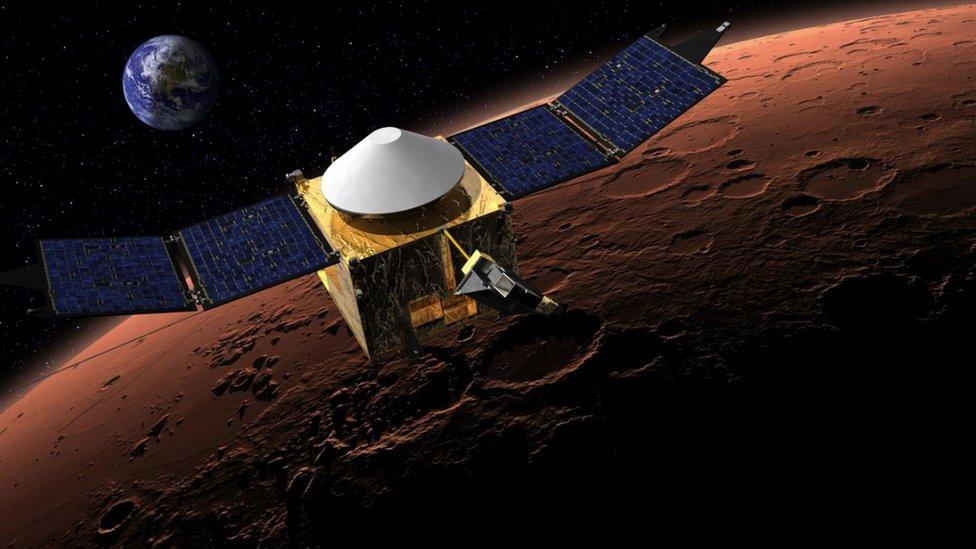
- Published9 December 2013

- Published8 April 2013
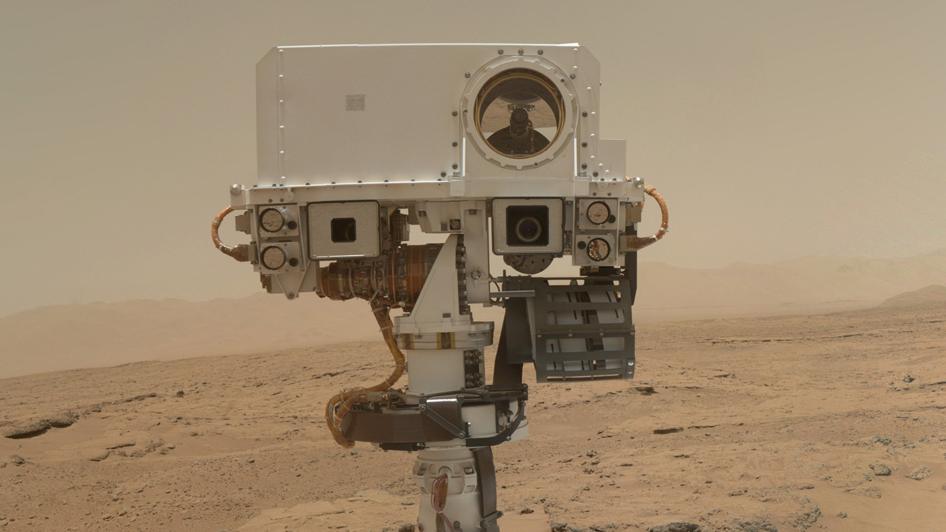
- Published18 November 2013
